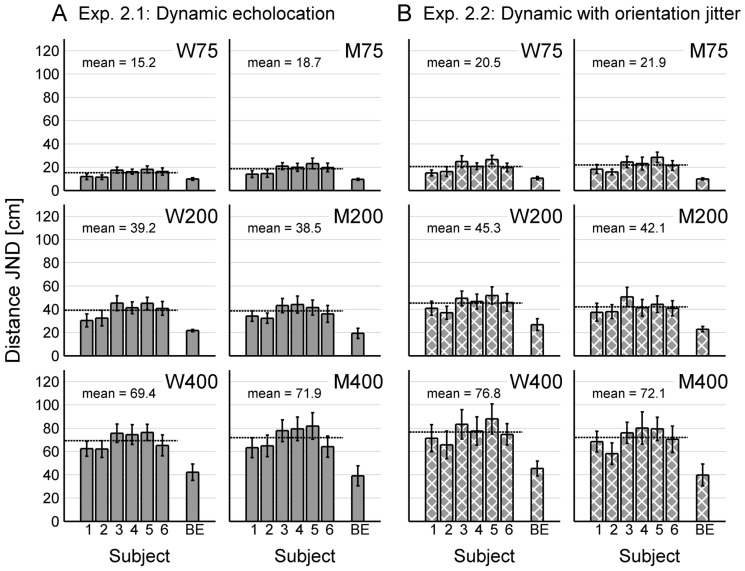Figure 5. Results of Experiment 2.
Performance is shown in terms of individual JNDs (averaged across the last three experimental runs for each subject, error bars represent standard deviations across these runs) for the six sighted subjects (subject 1–6) and the blind echolocation expert (BE). The mean performance across all sighted subjects is displayed as a dashed line and in written form. Panels in the same row represent the same reference distance, panels in the same column represent the same lateral distance (M75, M200, M400: results from positions along the corridors midline; W75, W200, W400: averaged results from positions near the left and near the right lateral wall). (A) Without orientation jitter, subjects did not profit from the additional head rotations: Only at reference position W400, performance was significantly better in Exp. 2.1 than in Exp. 1.1. However, the control experiment showed that here subjects did not exploit the additional dynamic dimension, but rather turned their head away from the close-by lateral wall and then echolocated at this static orientation. (B) In contrast to Exp. 1 and the control experiment, introducing an orientation jitter did not impair performance for any reference position in Exp. 2. This shows that free head rotations helped subjects to overcome the negative effect of orientation jitter. Again, the blind echolocation expert performed better than the sighted subjects in all conditions, especially for large reference distances.

